The Perfect Conduit for Stories: Amy Hest & Erin Stead Discuss Big Bear and Little Bear Go Fishing
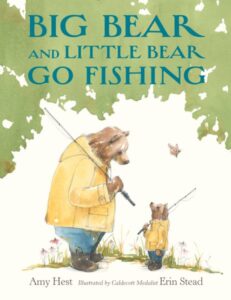
Like any good children’s librarian I bristle when I hear layman say casually that stale line that they-don’t-make-picture-books-like-they-used-to. Oh really? I assume you mean that books today can use more than two or three colors in the printing process. Or perhaps you’re referring to the fact that our books today are doing such a great job of highlighting a wider range of voices and perspectives. Is that what you mean?
It’s not, of course. They’re talking about some ineffable, magical time that may or may not have ever existed. In other words, they want to read a picture book and get that feeling they got when they read picture books as children. But you aren’t the same person today that you were as a child. As such, it can be hard to reconstitute such feelings.
ADVERTISEMENT
ADVERTISEMENT
Far better, to my mind, is the adult who wants to find new picture books that will instill that same love of literature in small children that they experienced once upon a time. Adults often cling a little too tightly to the “classics” and don’t spend enough time exploring what’s newly released and amazing out there. This is all just a long-winded way of me saying that today’s book, Big Bear and Little Bear Go Fishing is precisely what parents have been looking for all these years. They just didn’t know it was coming yet.
Already a Junior Library Guild Gold Standard selection, here’s a plot description from the publisher:
One day Big Bear says to Little Bear,
I’m just in the mood for fishing.
Me, too, says Little Bear. Just in the mood.With this decided, Big Bear and Little Bear are off… almost. First they need the right attire, poles in a red wagon, a basket of freshly-baked scones, and a good book to read. It’s unclear how much real fishing will get done today, but one thing’s for sure: there will be a cozy nap in the hammock at the end.
Adults who grew up with classic stories about friendship and caring will feel an immediate resonance in the low-stakes adventures of these two adorable bears. Amy Hest’s wry text sets a pitch-perfect mood, and Caldecott Medalist Erin Stead brings fine art to each bucolic illustration. Big Bear and Little Bear Go Fishing is a treat for all ages and is sure to find a treasured place on shelves for years to come.
It’s too good a book not to talk about. To be perfectly frank, I’d be a fool not to discuss it with the creators. It is, therefore, my sincere delight to speak today with Amy Hest and Erin E. Stead.
Betsy Bird: Amy, thank you so much for allowing me to pepper you with questions today. As I may have mentioned, BIG BEAR AND LITTLE BEAR is well and truly one of my favorites of the year, bar none. Did you have other bear-ish picture book classics on your mind as you wrote this? If so, did you find that helpful or a problem as you wrote the text?

Amy Hest: Usually when I write a story, the only thing on my mind will be that story, those characters, and my next sentence. Trust me, that’s plenty! I have to block out everything else (including other bear-ish picture books, in this case) and somehow see what’s happening, hear the conversations, figure out the story. I am quite possessive! I kind of have to own the whole thing, make every small moment in the text, every sentence, every comma, my own.
BB: That makes sense. And Erin, thank you too for answering some of my questions! You’ve done many a lovely book with editor Neal Porter in the past, but this is the first time he’s paired you with Amy Hest, that I can tell. How did you come to hear about BIG BEAR AND LITTLE BEAR? And what appealed to you about it?

Erin E. Stead: Thanks for asking! I’m always happy to talk about children’s books, although I usually like talking about other people’s books more than my own. As an artist who doesn’t write, I am constantly looking for good manuscripts to illustrate. I am married to a very good writer, but sometimes his dance card is a little full. Neal sent me Amy’s manuscript and I was really charmed by it. Amy has a way of writing that is direct, simple, and sensitive without being cloying or bossy. She wrote a real story—describing a small moment in time that could be pushed in the back of a grownup’s mind. But these small, quiet days are often the type of days that shape the front of a child’s mind.
BB: Well, that leads nicely into my next question, actually. Amy, when you write a manuscript, do you allow yourself to imagine what the accompanying art may entail or do you keep that entirely separate, focusing only on the text itself?
Amy: The only way I get involved in the art is to write specifically. Yellow coats for fishing, for example, or blueberry scones (not cranberry). And in most cases, I don’t even know – when I’m deep into writing the story – who the illustrator is going to be. I’m a pretty bossy person in general, but when it comes to the art for my stories, I butt out. And look what happens! (Thank you, Erin!)
BB: Thank you, Erin, indeed! Speaking of which, Erin, so many children’s picture books feature bears in some way. I’ve enjoyed your own bears in books like BEAR HAS A STORY TO TELL and in AND THEN IT’S SPRING, but the bears in Amy’s book are a little different. They’re remarkably well dressed, for one thing. What, for an artist, is the appeal of illustrating a bear? Are you fond of drawing them yourself at all?

photo by Nicole Haley Photography
Erin: Bears really are fun to draw. I could pretend to get intellectual about it here, but honestly, they’re just fun. They are easy to move around and anthropomorphize without making it seem unnatural or scary. I think when we can take a bear and put it in an imaginary setting, it’s as though we’re able to make them giant magical dogs. There’s something about their faces, fur, and maybe even their fierceness that makes them the perfect conduit for some stories (or perfect stuffed animal for bedtime).
BB: Aww. and Amy, this is, from what I can tell, your first book with Erin Stead. Was she someone you had in mind to work with someday or was she paired to your manuscript unexpectedly? And what do you feel Erin’s art brings to this particular story?
Amy: I love Erin’s work. Have always loved her work. And never even dreamed she would one day be illustrating a book of mine. Lucky me, right? What she brought to the book is – well – everything. This book is about a very special relationship. It may look to be about fishing (and some other things), but it’s really a love story, of course, and on every page, their love for each other comes shining through. (Again, thank you Erin.) Their body language, the way they look at each other, and the stunning setting … I am dazzled and grateful and happy … every time I look at these pictures. Which is often!
BB: It’s fast becoming my favorite activity too. Erin, my favorite moment in this book is a visual one that just stops me cold every time I see it. You’ve a sequence where Little Bear is afraid to jump into the boat and Big Bear assures him that he’ll catch him. There are just two images on the page. In the first you’ve Little Bear on the dock, and in the next he’s safe in the embrace of Big Bear in the boat. These images could have been on separate pages or you could have shown the moment of the jump itself, but something about this particular coupling hits much harder emotionally. When you illustrate a moment in a book like that, do you see it in your mind’s eye the minute you read the manuscript or is it something you workshop, try out, and hone over time?
Erin: Well, thanks. That’s a nice thing to say.
I’m going to preface this response by admitting it might be a little long winded. Let’s see how this goes.

For the reader of this interview, let me start by saying that even though this book is titled “Big Bear and Little Bear Go Fishing,” the time spent fishing is only about half. The first half of the book is about the attempt to go fishing. We spend a lot of time with these two bears getting ready, then forgetting something, the prepping, then doubling back. Truthfully, the book has very little to do about fishing and is more about the time we spend together.
The manuscript is simple and rhythmic in a way I am not coming across very much lately in books, but, in my opinion, makes for such a nice read aloud to a smaller audience. Within that simple structure, moments of (seemingly small) emotional tension are snuck in. One of them is this moment Betsy (may I call you Betsy?) Is referring to, where Little Bear has to get into the boat from the dock. Little Bear is uncertain here, and I draw him paused at the dock thinking about the leap. Underneath that drawing, there is another panel where the jump is over. He’s landed in the boat and is safely celebrated in Big Bear’s arms.
I’ve recently become a mother. It was actually almost 7 years ago, but time has moved so quickly without my consent that it still seems recent. As a children’s book maker, a lot of the difficulty of the job comes from adults who don’t remember what it’s like to be a kid. Adults with good intentions but who tend to paint all children with a broad brush. Kids are all the same, and if you do this and this and this then eventually they’ll get out of this terrible childhood phase and become grownups who love…I don’t know…what’s something adults like? Finance? So, before my daughter was born, there was a small worry, amongst all the real concerns, that something in my children’s literature brain would switch off. Suddenly I’d be on the adult’s side of things.
It didn’t. I’m still on the kids’ side.

So, I considered this moment where Little Bear is standing on the dock, hesitating, thinking about the wobbliness of the boat on the water, and trying to calculate the jump into the boat. I think as grownups we see the actual leap as the big thing here. That’s where the accomplishment is. You jumped! Those are the things we adults tend to celebrate for kids, too. I’ve noticed it in my own parenting. But I think it is sometimes a miscalculation. I thought about how I’d feel, standing at the dock, wondering if the boat would drift away just as I let my feet leave the wooden boards. To me, the emotional resonance is there. We have all stood wondering if we should do the next thing. And we have all wanted assurance once we’ve landed.
The pleasure in illustrating this book was taking these quiet moments and establishing a (hopefully warm) relationship between these two characters. It’s not the adult-version big moments that are celebrated in this book. The idea here is the quiet, simple day is all a big moment when you are little.
BB: I’m a bit disinclined to say anything at all after that. I’ll probably be turning over the idea of remaining “on the kids’ side” in my own head for a while, honestly. That’s just so succinctly put. It makes my next question to Amy sound a bit, ah, trivial. Even so, I just wanna know. Amy, I need to include at least one hard hitting question in this Q&A so watch out, here it is: Do you fish yourself? If so, do you enjoy it? And if you don’t, have you ever felt a yearning to do so?
Amy: The closest I come to fishing is my early morning swim. The pool is about a mile from my apartment, and I usually leave home before the sun comes up. (I guess that part is a little like being a legitimate fisherman.) I swim a bunch of laps. Honestly, I don’t care for lake swimming (quite concerned about what kind of squirmy thing might be swimming with me) and I don’t care for ocean swimming (again, who might be in there with me?). A nice, clear pool, where I can see the bottom, that’s as close as I get to fishing.
BB: Erin, just to get back to the book a bit, please tell us a little bit about the role that Neal, your editor, plays when you illustrate a book of this sort. What kind of input does he provide? Was he mostly hands off with BIG BEAR AND LITTLE BEAR or did he have any suggestions along the way?
Erin: I’d be really curious to see how Neal would answer this question.

I wouldn’t be an illustrator without Neal Porter, plain and simple. We have worked together for fifteen years, and he has tolerated me almost the entire time.
Neal and Amy went through a few rounds of edits with the manuscript, but what is different (and probably sometimes infuriating) about me is that I sit in on the edits most of the time. Neal is a wonderful line editor—careful to let the writer fix a line in their own way and respectful of the rhythm of the text. I love editing manuscripts and am very appreciative that he lets me throw in my two cents, especially if I think a moment can be described with a picture at a certain point in the story instead of writing too many words on top of a moment.
It’s hard to answer about Neal’s input briefly because his biggest editorial gift is somewhat abstract. Neal tends to trust the people he hires. He gives us all a lot of rope. But he does reel us back in when we go too far in any direction. My main goal for this book was to play with the simplicity and sincerity of this story in both the illustrations and design. I don’t remember him having to tug that rope too hard at any junction for Big Bear and Little Bear Go Fishing.
Perhaps he remembers otherwise.
ADVERTISEMENT
ADVERTISEMENT
BB: Well, this has been lovely, but I should be winding it down a bit. What do you both have coming out next? Amy, in 2024 alone you’ve the picture books WHEN ROSIE WALKS GEORGE and BUNNY SHOULD BE SLEEPING. Can you talk at all about these titles?
Amy: BUNNY SHOULD BE SLEEPING and WHEN ROSIE WALKS GEORGE just happened to be published, along with BIG BEAR AND LITTLE BEAR GO FISHING, this year. What are the odds of that happening! I love that all three books have such a different tone. Even though all three are picture books. Even though all three are about loving relationships and trust. All three are cozy and comforting, with young characters who are beloved … and beyond. And let’s not forget, these three new picture books are indeed gloriously illustrated by the best of the best.
BB: No argument there. Erin, what else will you have coming out soon? What else is on your plate (that you can talk about)?
Erin: I am working on finishing a third Amos McGee book and I am having such a good time doing it. It’s called A Snow Day for Amos McGee and it will be out next fall.
All I can say is that this is the kind of interview that I wish I could take some kind of credit for. It’s fairly obvious, though, that it’s the subjects who have brought their all. As such, I would like to sincerely thank Erin and Amy for the sheer swaths of time and thought and attention they brought to this discussion today. Thank you too to Sara DiSalvo and the team at Holiday House for helping to put all this together. Big Bear and Little Bear Go Fishing is out now. I’m afraid I must insist that you go out and read it for yourself. It’s not overstating it to say that this is a book that will stay with you for a long, long time.
Filed under: Best Books, Best Books of 2024, Interviews
About Betsy Bird
Betsy Bird is currently the Collection Development Manager of the Evanston Public Library system and a former Materials Specialist for New York Public Library. She has served on Newbery, written for Horn Book, and has done other lovely little things that she'd love to tell you about but that she's sure you'd find more interesting to hear of in person. Her opinions are her own and do not reflect those of EPL, SLJ, or any of the other acronyms you might be able to name. Follow her on Twitter: @fuseeight.
ADVERTISEMENT
ADVERTISEMENT
SLJ Blog Network
Zachariah OHora on PBS
Girlmode | Review
The Seven Bills That Will Safeguard the Future of School Librarianship
Read Rec Rachel: New YA Releases for November and December 2024
Gayle Forman Visits The Yarn!
ADVERTISEMENT



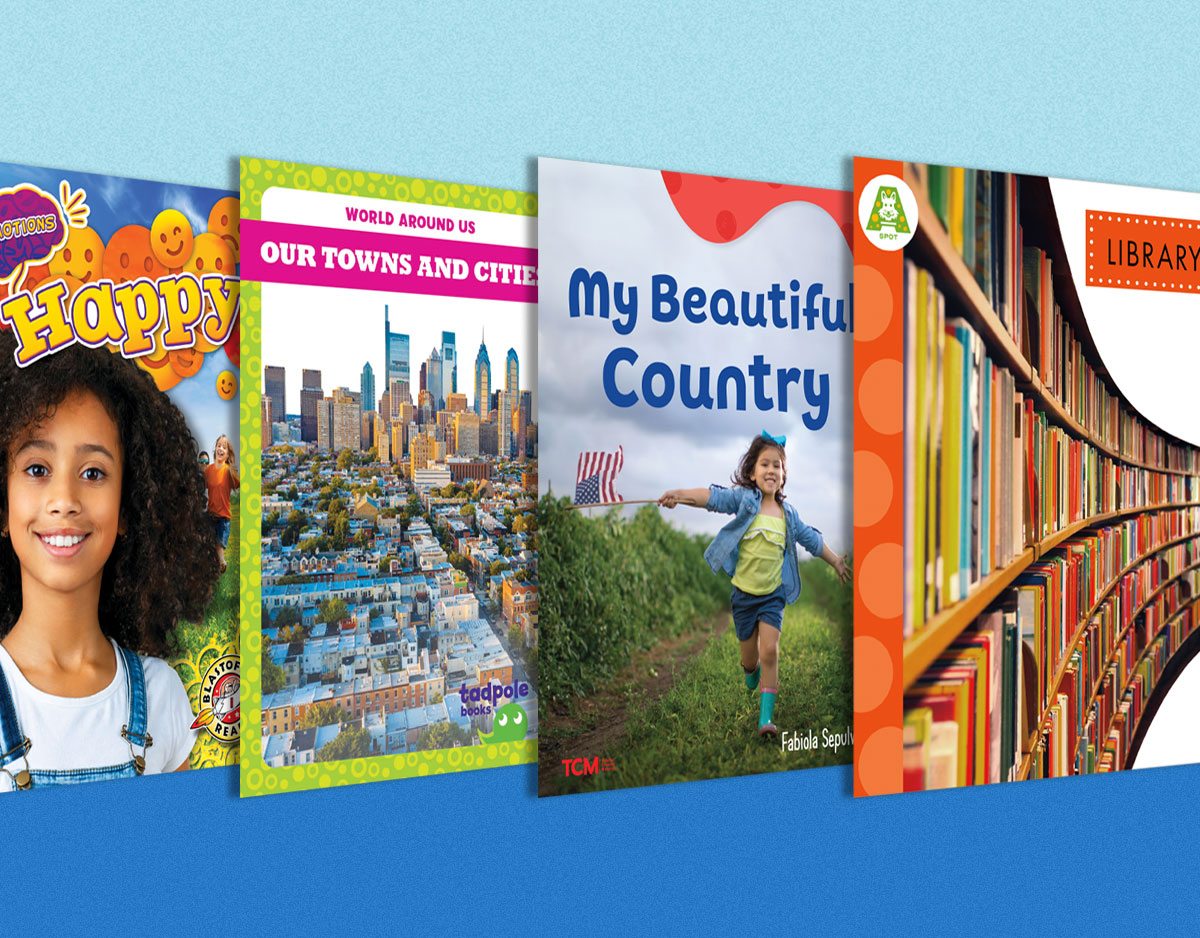
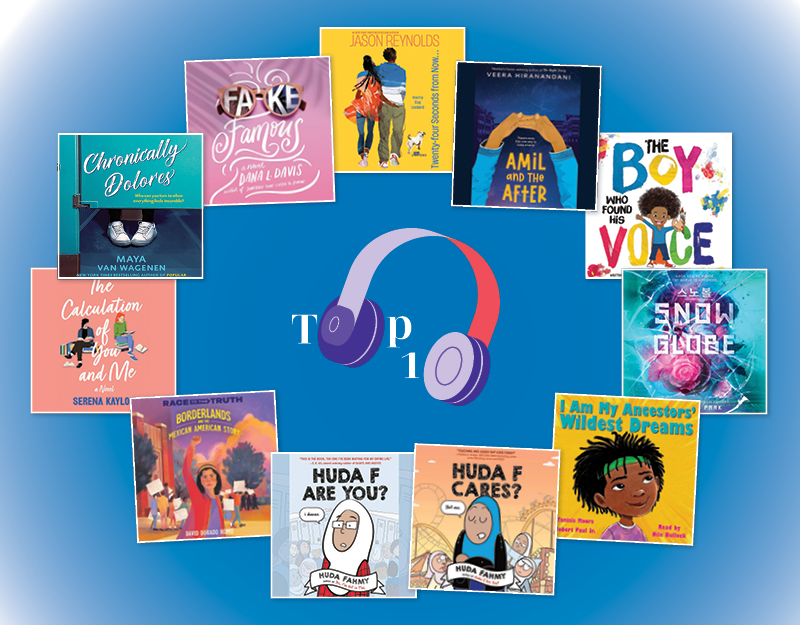
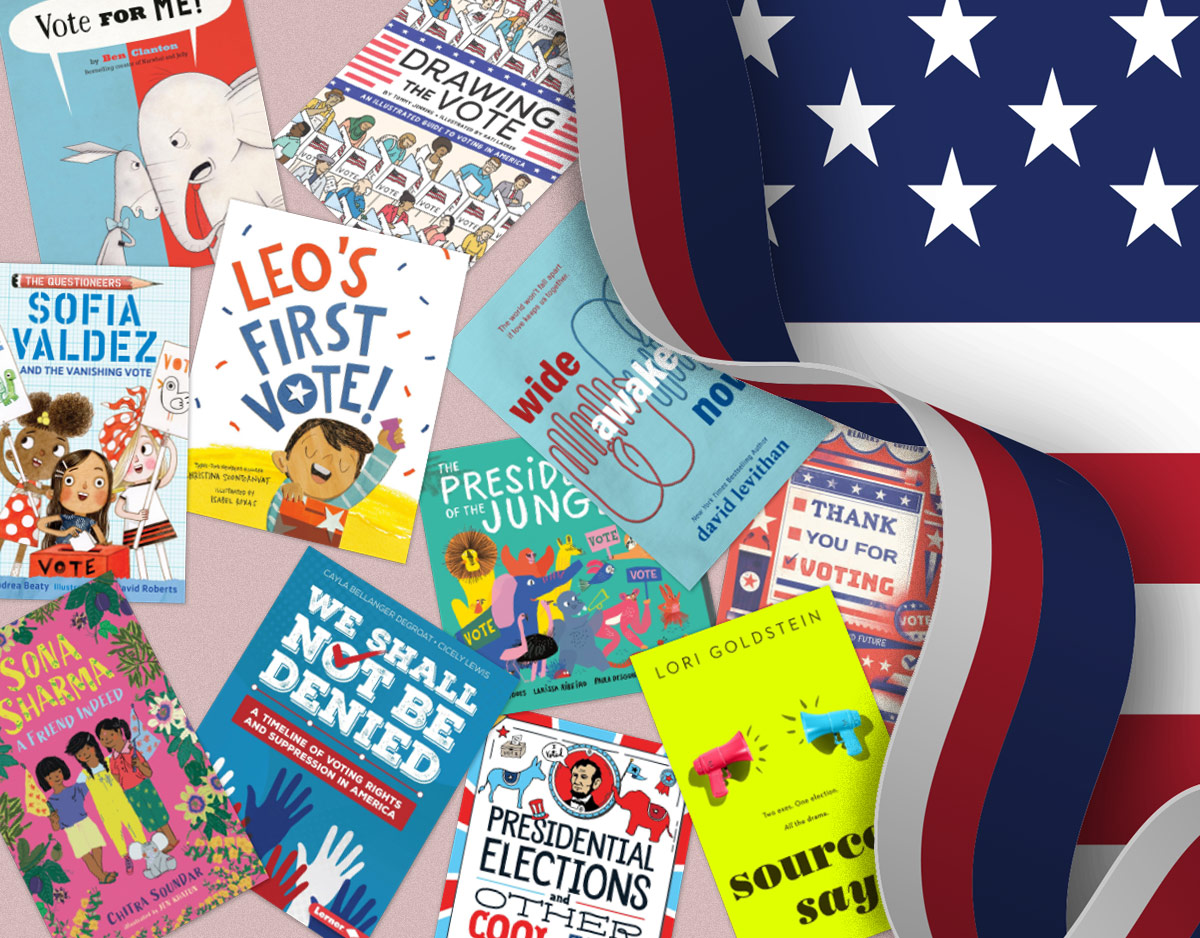
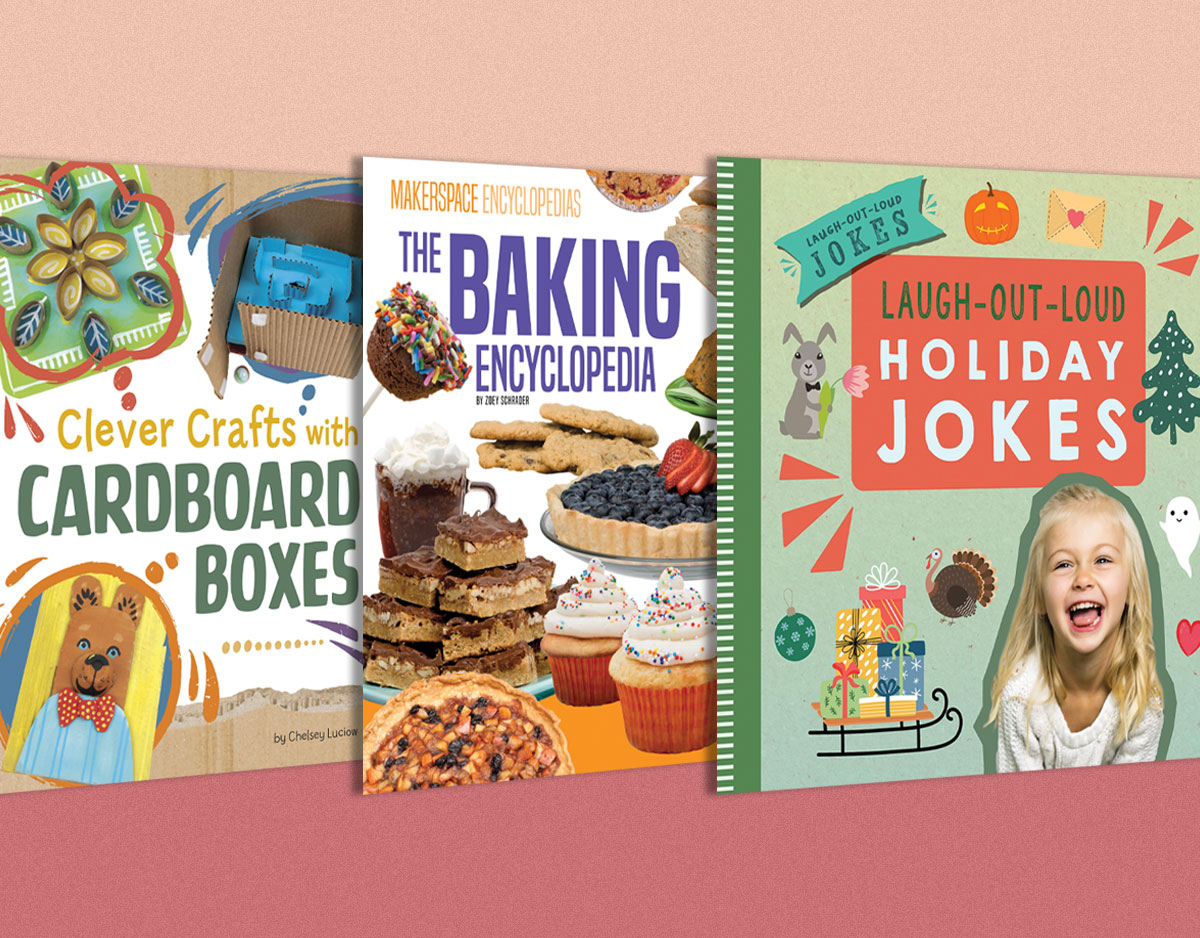
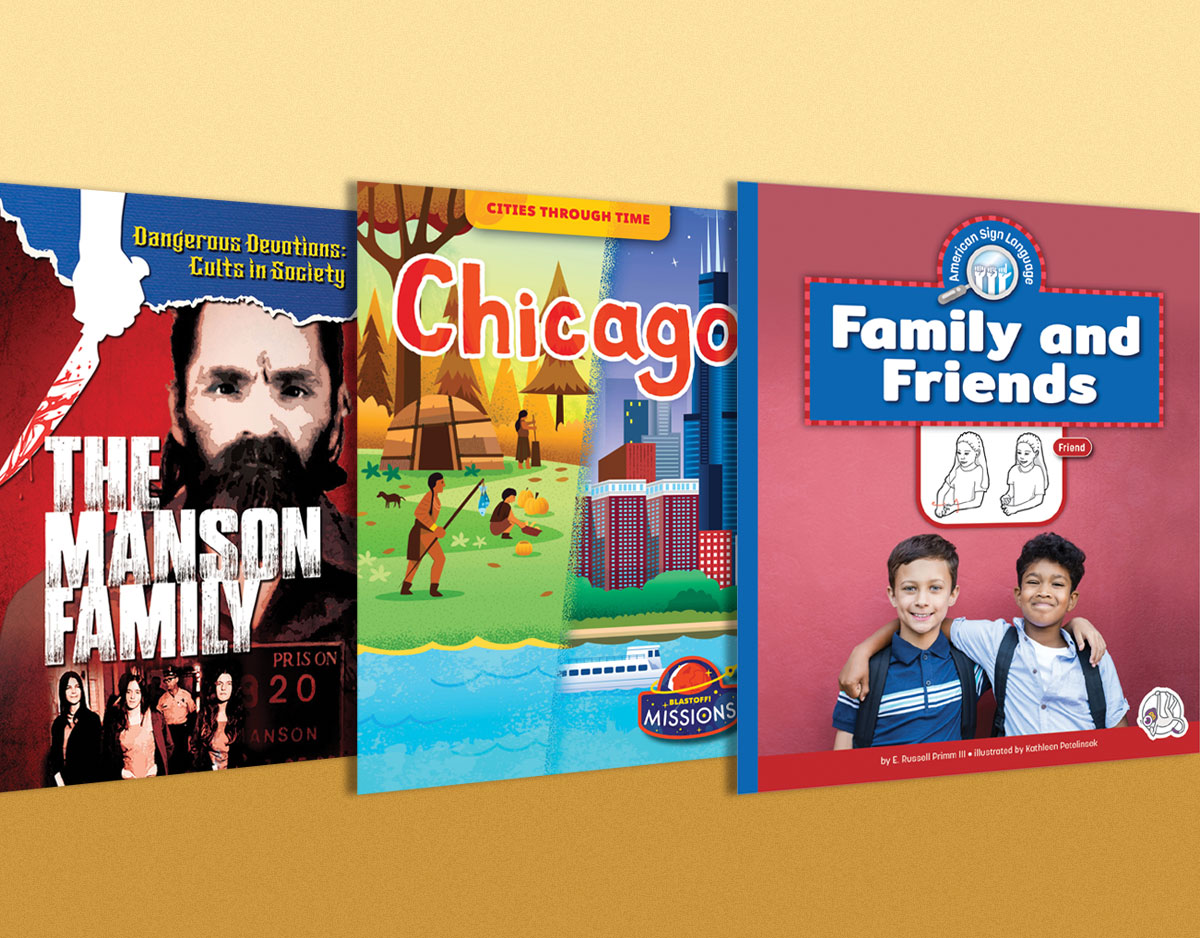
One of my most favorite picture books is A STORY FOR BEAR (2018), Thank you, Erin, for helping me understand why. “I think when we can take a bear and put it in an imaginary setting, it’s as though we’re able to make them giant magical dogs.” I completely identify with this statement. Lukewarm about bears but totally in love with dogs . . . the bigger the better!
Winnie the Pooh came to mind reading this interview. “The book has very little to do about fishing and is more about the time we spend together.” Another statement: “As a children’s book maker, a lot of the difficulty of the job comes from adults who don’t remember what it’s like to be a kid.” AMEN.
Dr. Spock was respected as the #1 authority on child rearing at the time I would have developmentally been exposed to picture books. Unfortunately, he believed reading to children should be left to teachers. Apparently my parents followed this advice and I was not introduced to books such as BIG BEAR AND LITTLE BEAR GO FISHING until children’s literature courses in college. I’m now 78 and still find stories like this both joyful and also personally necessary. “I’m still on the kid’s side”, you wrote. The “kid” in me is still alive and well., filling that missing experience.
Betsy, you mentioned Julie Danielson, 7-Imp, and a few days ago, Peter Sieruta. I love that you are including interviews with the creators of the books you review. My reading enjoyment has been greatly increased because of this. Thank you Erin, Amy, and Betsy for your words today.